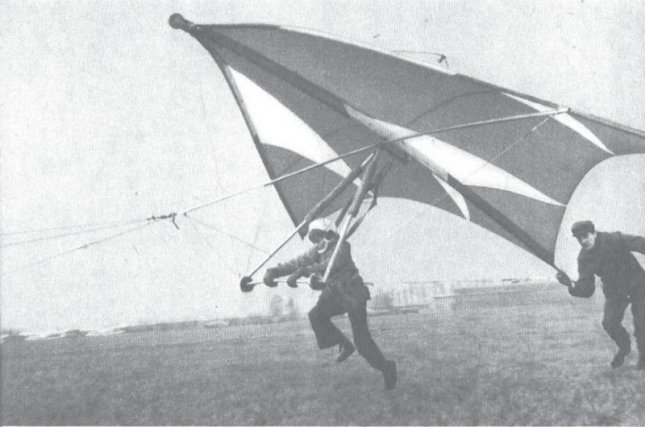
[caption] Lotnia Młodych Technika. The first take-off of 12-year-old Szymon at Gocław airport. (Source: Młody Technik No. 3/1977).
In 1976, members of the Inventors ' Club at the House of Young Techniques in Warsaw built, under the supervision of MSc. Andrzej Moldenhaver , a few hang-gliders - referred to as "SMT youth hang-gliders" . By design, they were a very safe hang-glider that would allow young people under 16 to try out forces in hang gliding. At the same time, the construction of the hang glider was to be a model for elective courses in schools in the field of technology and sport.
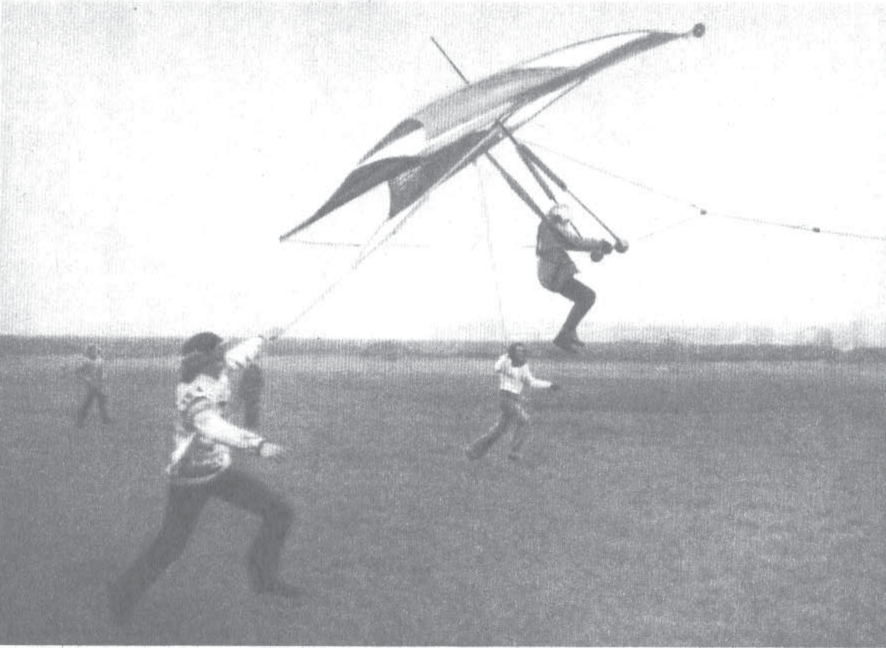
As a result of various lessons learned from the hang glider, a method was developed for the initial and interesting learning of flying, and at the same time pleasurable fun in the open air. It was a flight on the lobby with side belaying at the same time. Such a flight is possible with a not too strong wind on flat terrain (a big advantage, because the major part of our country is a plain). Four people were needed to tow the hang gliders, which, without too much fatigue, could pull the hang glider on the line at a distance of 30-50 m.
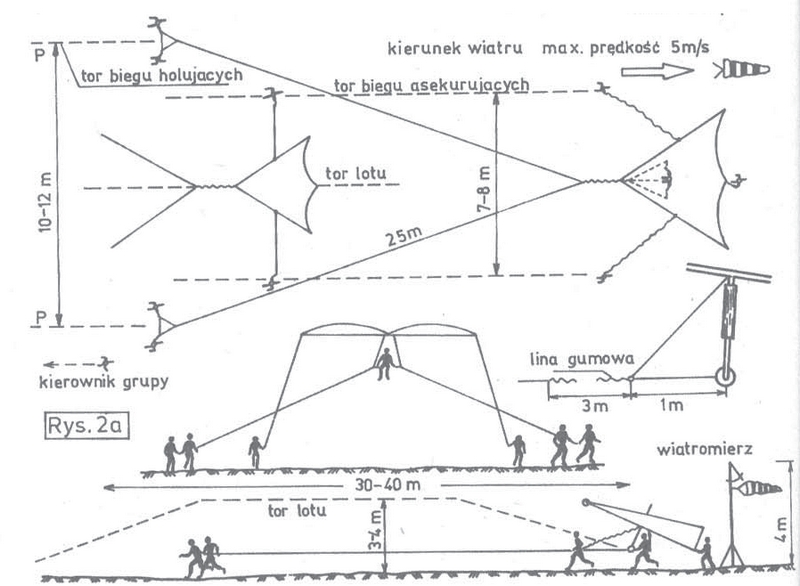
In order to prevent slippage in the side of the hang glider, which in the case of a lack of flight by the pilot performing his first flights usually leads to a rollover, two belaying links attached to two sides of the glider. The links, held in the hands of two running helpers, prevented the glider from rising too high and prevented it from tilting. In this way, a simple system of towing flights was created, in which the pilot rose to a height of 4- 5 m, and at the same time the hang glider was protected against wind gusts and lateral inclinations.
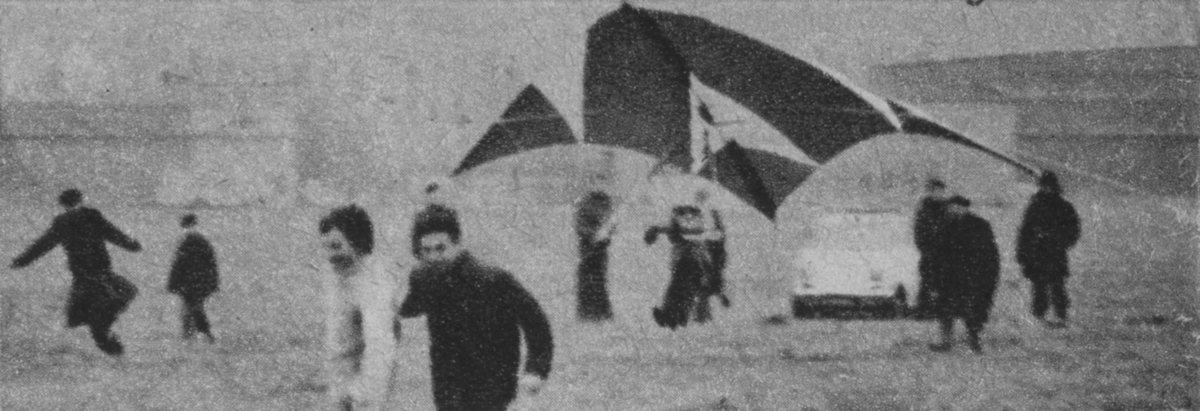
Lotnia was presented during the show of hang gliders on Górka Szcześliwicka in Warsaw, which took place on May 23, 1906. In November this year a flight show for representatives of the Ministry of Education and Education from Schools and Physical Education Department was organized at the Aeroklub Warszawskie - organized by the Young's editors Technika i Stacja Młodych Technika in Warsaw. This demonstration was a proposition of a new form of technical and movement classes for youth in schools. He used the mini-patch to 11-year-old Szymon Moldenhawer, fifth grade student.
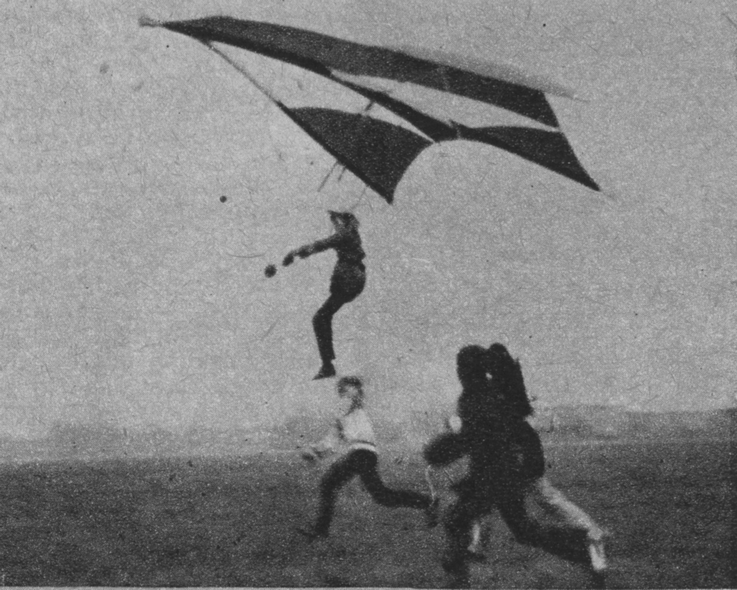
In March 1977, the Young Technik magazine published plans to build a "youth hang-glider . " In the same year, students of the High School for them. The People's Aviation Polish in Warsaw built a hang glider according to published plans. In February 1978, three female students and four students, the creators of the flying hoppers, underwent an initial training, which took place at Gubałówka near Zakopane. They completed 56 flights in which safe training methods were developed and improved. Despite the difficult weather conditions, the exercises were successful, 3 boys and girls even reached a higher level of initiation by making flights of length up to 200 m at a height of 2-3 m.
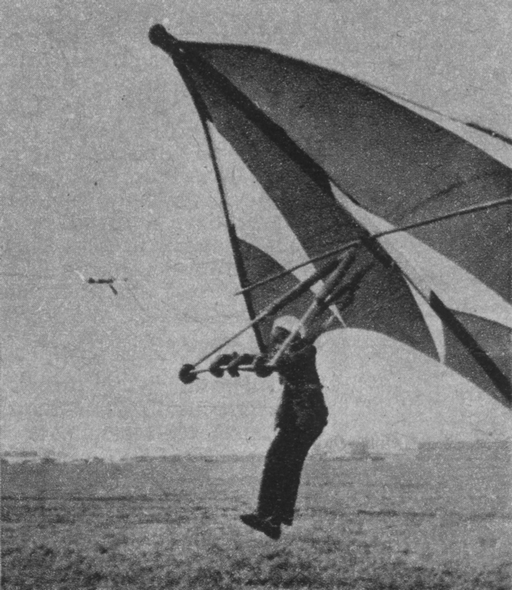
In the summer of 1978, the same hang-glider was used to train the scouts from Chorągwia Katowicka gathered at a special scientific camp in the Częstochowsko-Krakowska Jura near Korczyce. Many people who were willing to fly, after experiencing the first emotion, resigned from further exercises. Maybe because of the hard work at the ropes, or maybe they said it was not for them . Some, however, trained furiously. Some quickly caught flying , others had to repeat the exercise many times. There were also those who hung helplessly under the hang glider until the end of the exercises. In total, over 160 flights were made, with no injuries to trained scouts and damage to hang gliders.
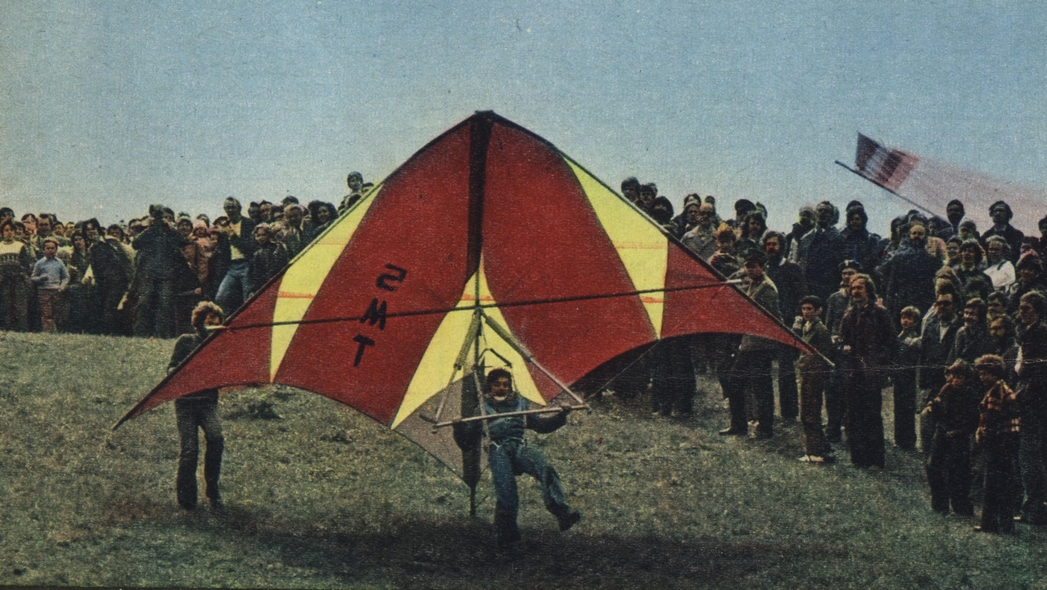
During the training at Lotnia Młodych Technika, several teachers from nearby high schools were present (some of them were also completely unprepared). They expressed their desire to build hang gliders in their schools. Many scouts also caught fire on flying and building hang gliders. No information about the construction of further copies of "youth hang-gliders".
Construction :
The skeleton of hang gliders consisted of two leading edges, a girder, a keel, a mast and a tiller. Made of duralumin tubes: leading edges - PA 7G; N ø 40 x 1.5, girder and kilo- PA 6 ø 45 x 1 or ø 45 x 1.5, mast and control gear - PA 7G; N ø 30 x 1.5 and PA 6 ø 32 x 1.5. For easier transport, it was possible to divide the aerial skeleton tubes - then the length of the hang glider was obtained after folding approx. 3 m. The skeleton stiffened with the system of lower and upper pull rods. On the front of the hang glider and on the controls, additional wheels or (winter) skis were used.
One-sided cover (tergal, torlen, dacron or ortalion). .
Harness adapted for flights in a sitting position.
Technical data Lotnia Młodych Technika (according to [1]):
Span - approx. 9 m, length - approx. 5.9 m, supporting surface - approx. 20 (according to [3] - 12) m 2 .
Curb weight - approx. 20 (according to [3] - 12) kg, pilot mass - up to 40 kg.
 Home
Home








